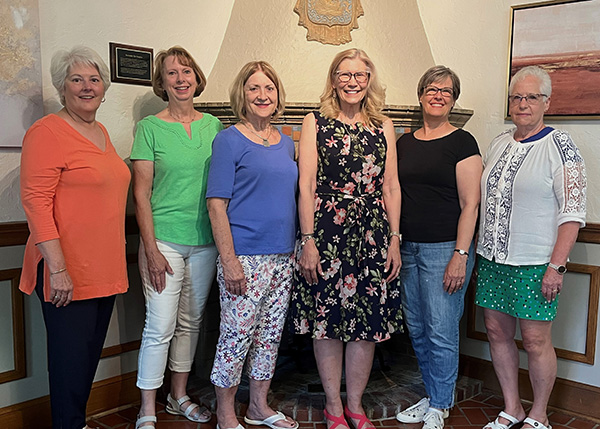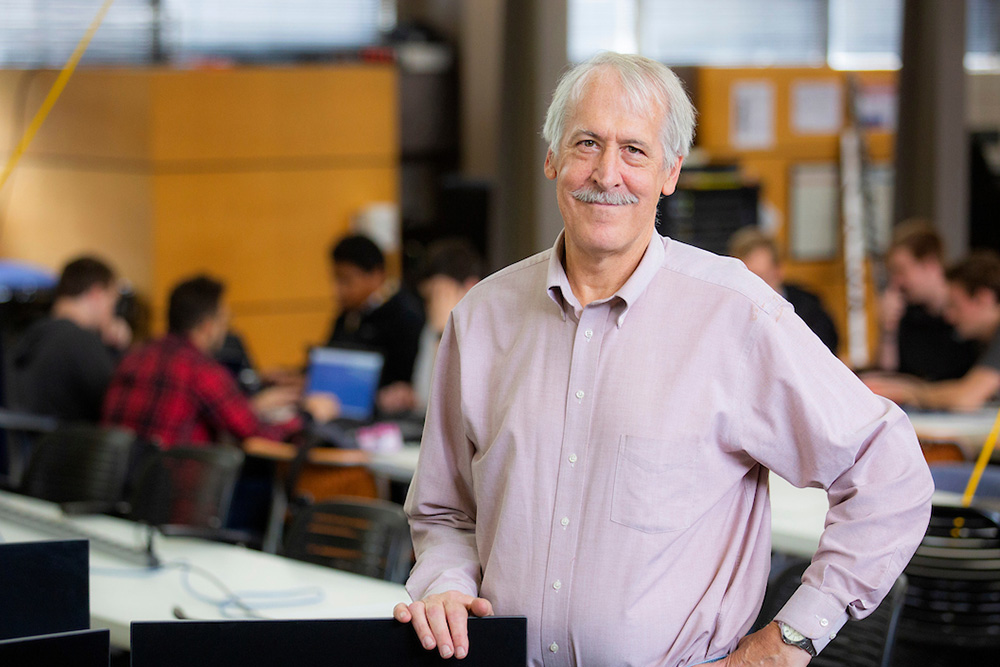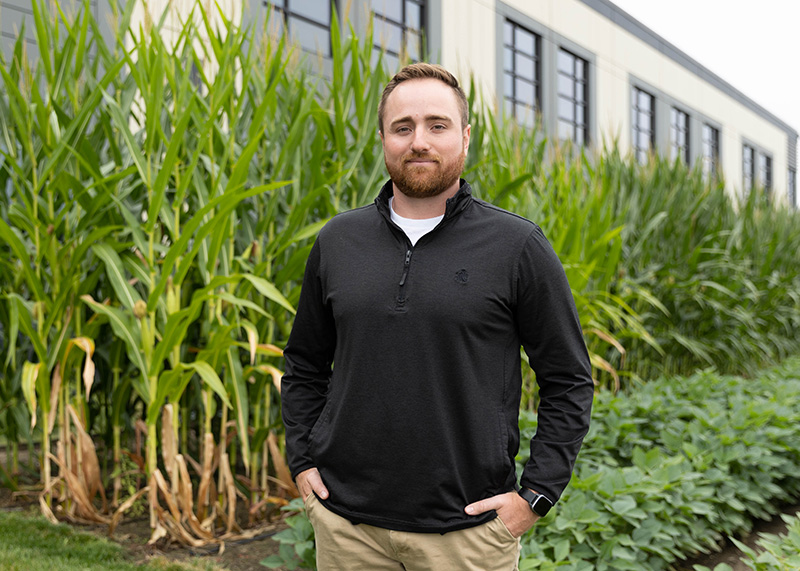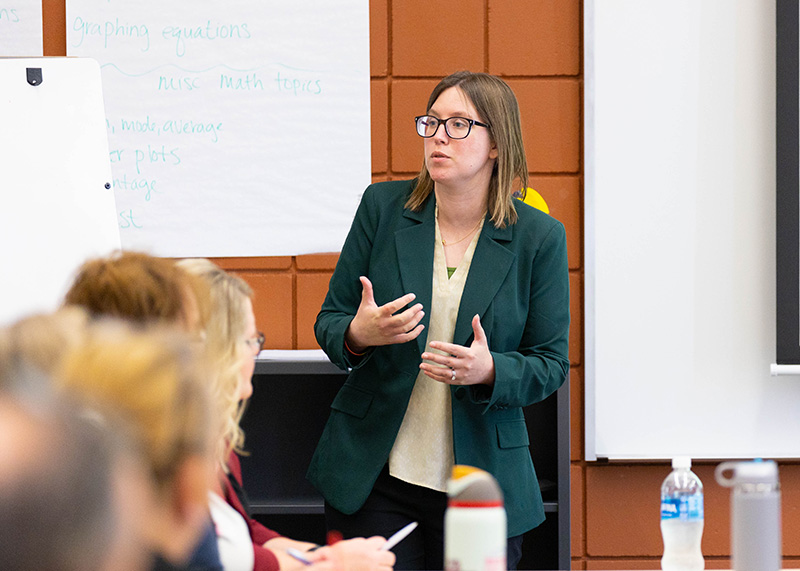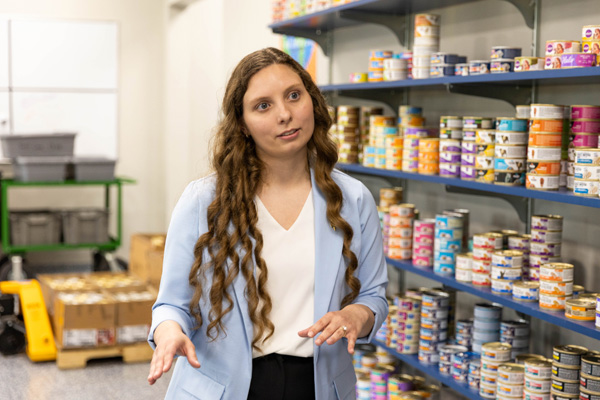Pioneering Online Education
Iowa State’s Child Nutrition Professional Ph.D. Program Celebrates 20 Years of Innovation
In June, some of the first graduates of Iowa State University’s child nutrition professional (CNP) Ph.D. program gathered on campus to celebrate the program’s 20th anniversary. During this milestone event, attendees reflected on the journey and success of one of Iowa State’s pioneering online education programs.
Seeing the success of a hybrid model used by a leadership academy in family and consumer sciences that combined intense on-campus coursework with online learning, Dr. Jeannie Sneed, the director of graduate education for the hospitality management program, proposed a similar program for child nutrition professionals. She had frequently been asked by professionals working in child nutrition how they could obtain their Ph.D. without leaving their jobs and families.
These professionals were mainly working as school district nutrition program professionals. They had a lot on their “plates” – most were managers of over 100 staff, oversaw between a dozen and twenty feeding sites, and thousands of children relied on them for nourishing meals throughout the year.
However, they hit obstacles as professionals in their field when it came to establishing their expertise around stakeholders like government officials or state and district decision-makers when it came to budgeting and policy.
Their frustration was the catalyst for the development of the doctoral program. “We needed to raise the bar in school nutrition,” said Katie Wilson, one of the program’s first students. Wilson, who had been working in the Middleton, WI, school district, oversaw a staff of 70 and fed 9,000 students. She desired a doctoral degree to help elevate growth and success in her child nutrition program and needed a way to earn her degree without leaving her job and family.
The goals of the program were ambitious and clear. “The program was designed to provide advanced preparation in food service management, research, and leadership for those in child nutrition programs,” explained Dr. Mary Gregoire, chair of the Department of Apparel, Education Studies, and Hospitality Management at the time.
The program offered an innovative solution: in-state tuition for students who could commit to spending an intense three weeks on campus each summer for two years, coupled with independent learning at their home locations. There was a residency requirement to qualify for in-state tuition at the time, which the summer commitment met. This structure allowed Wilson and her peers to integrate their master’s degree credits and earn a Ph.D. at their own pace and without being physically on campus the entire time to do so – a new idea at the time.
The food service and lodging management Ph.D. (now the hospitality management Ph.D.) program in the College of Human Sciences quickly gained approval and welcomed its first cohort of 18 students in 2004.
The on-campus experience was demanding. The program required students to engage in pre-campus reading, followed by intensive in-person lectures, discussions, and group work while on campus. Students spent long hours in the classroom from early morning until late at night and even weekends with assignments completed during the remaining hours.
Following the summer experience, students completed online coursework during the fall and spring semesters. This cycle repeated for the first two years before students moved on to their dissertation research.
“Off-campus work was difficult because we were not doing online learning like we are now. The technology was not there yet for every course; for some, we were mailed disks with coursework and then had to get on a software system once a week to get the lecture,” Wilson added.
Barbara Jirka recalled mailing printed copies of papers to her professors for them to provide written comments and mail them back to her for revisions. Jirka went on to become the program’s first graduate. At the time, she worked in marketing at Tyson Foods and sought to learn more about what school nutrition directors needed from food manufacturing companies like hers. The ability to earn her degree while employed was critical for Jirka.
Online work was a blend of various delivery methods, including recorded lectures, independent work like paper writing, and group projects. Reflecting on the differences between then and now, Carol Longley noted that online learning has evolved significantly, becoming more streamlined and accessible.
Longley managed a team of 125 staff members responsible for feeding 7,000 students in her school district. With a district of this size, the responsibilities were vast and challenging. Longley’s desire for professional growth and the convenience of an accessible program drove her to pursue her degree.
Despite early challenges, students embraced the distance learning experience and thrived in it. The blend of reading, interactive sessions, and collaborative projects provided a comprehensive learning experience. This first cohort created a supportive network within their group, encouraging and giving peer advice when needed.
Wilson and Longley shared their experiences juggling coursework with professional and family responsibilities. “This was tough, but I was very determined to succeed. I took my computer and a portable printer to every conference and out-of-town event. I was always working on something,” Wilson said. Wilson’s high school-aged children and supportive husband played a crucial role in managing household duties, allowing her to focus on her studies so she could complete her degree, which she did in two and a half years.
Longley often carried her schoolwork to her children’s sports events to get work done whenever possible. “I used any available downtime to get schoolwork done,” she recalls.
Jirka was no different; she took the maximum number of credits possible each semester and completed the program in two years.
Sneed emphasized that the program’s faculty were committed to providing flexibility to students. “We would meet virtually with students and answer questions in the evenings,” she notes. Faculty also used non-traditional avenues for accommodating students’ busy lives, holding dissertation defenses across the country and even hosting students at home while they worked on their research projects. Several research projects served as a basis for policy within the USDA National School Lunch program.
Their juggling acts, perseverance, and collegiality paid off. Jirka is now a nutritionist at the USDA Food Nutrition Service’s Center for Nutrition Policy and Promotion, where she works with food companies to communicate nutrition information to consumers through the My Plate program. Wilson went on to serve as the Executive Director of the Institute of Child Nutrition and Deputy Under Secretary for USDA Food and Nutrition and Consumer Services. She followed another graduate, Janey Thornton, in the USDA role. Longley retired from her school district position in 2008 and transitioned to teaching at the university level for eight years and continued contributing to the field by consulting for the Institute of Child Nutrition. Other graduates from the first cohort also became university-level educators.
A significant shift occurred a few years after the program’s launch. The program expanded its reach, catering to a broader range of professionals across the full spectrum of hospitality management. The hospitality management program continues to be housed within the Apparel, Events, and Hospitality Management department.
What began as the child nutrition professional Ph.D. program at Iowa State University set a standard for future online programs, showcasing the university’s commitment to innovation and excellence in education. It is a pioneering example of how flexible, high-quality education can transform careers and lives through the development of future leaders.
Find your next with flexible, convenient, high-quality education now
Take the next step and learn about Iowa State University’s innovative online programs. They are designed to meet the needs of mid-career professionals seeking to advance their careers. With flexible, data-driven programs and a supportive community, you are empowered to achieve your next professional goal.
